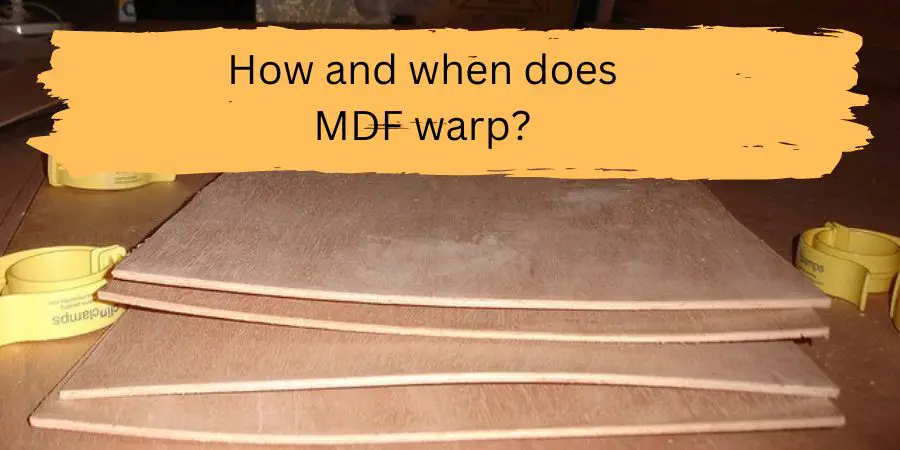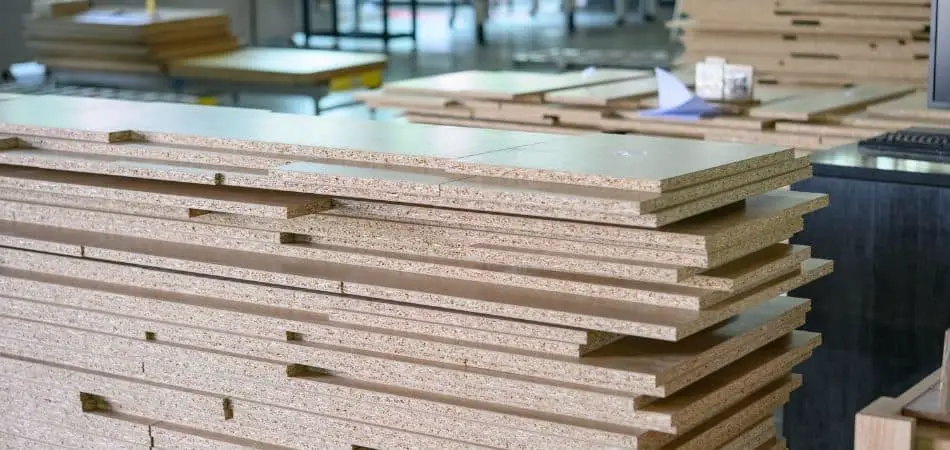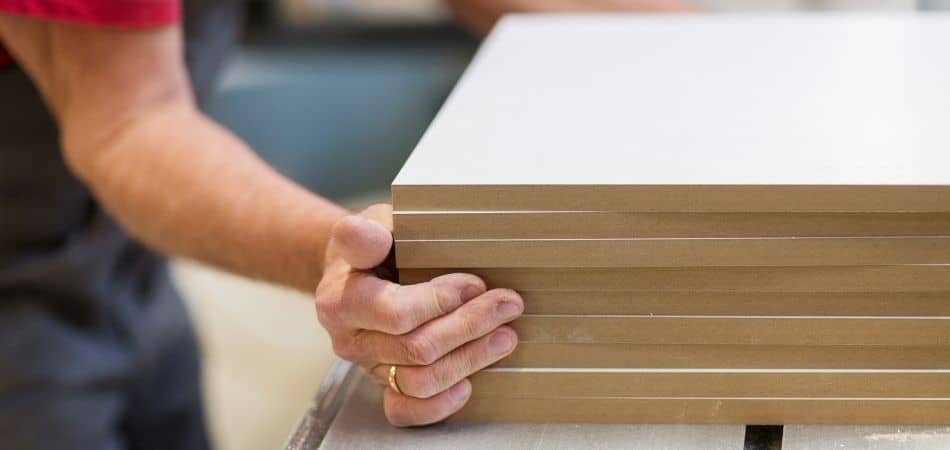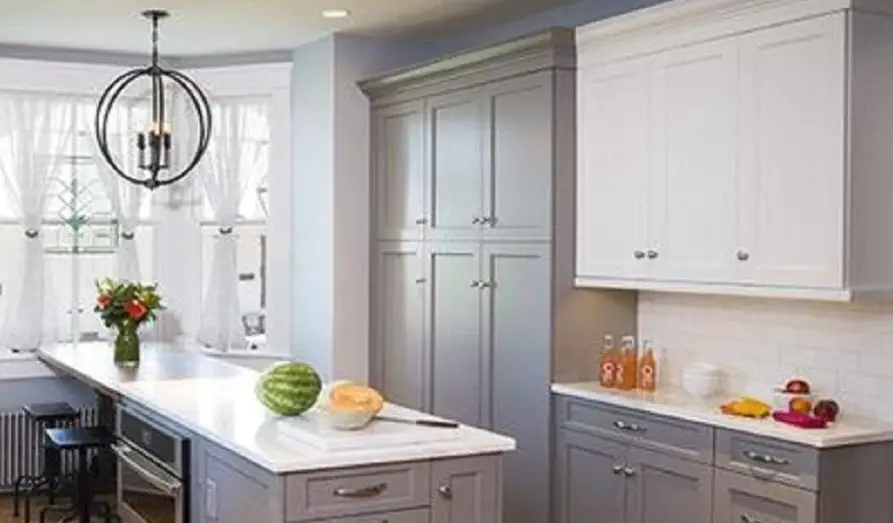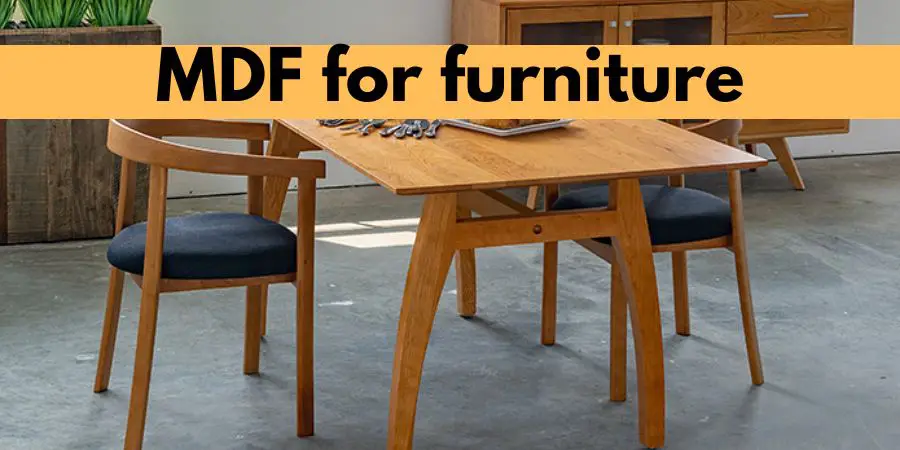MDF is not immune to warping, which can occur under certain conditions.
In this blog post, we will discuss when and how MDF can warp and what you can do to prevent it.
What is Warping in MDF?
Warping refers to the distortion of an MDF, typically caused by changes in moisture, temperature, or pressure. When a material warps, it loses its shape and becomes uneven or curved. Warping can occur in various materials, including wood, plastic, metal, and even MDF.
When Does MDF Warp?
MDF is susceptible to warping under certain conditions, mainly related to moisture and temperature. The following are some common causes of MDF warping:
1. Moisture can make MDF warp
MDF is made of wood fibers, which can absorb moisture from the environment. When MDF absorbs moisture, it can swell and deform, leading to warping. Moisture can come from various sources, including high humidity, water spills, and exposure to moisture-rich environments such as bathrooms and kitchens.
2. Heat can cause Warping in MDF
MDF can also warp under high temperatures, such as those found in direct sunlight or near heat sources like radiators or stoves. Heat can cause MDF to expand and contract, leading to warping.
3. Improper Storage
MDF should be stored in a dry, cool, and well-ventilated area to prevent moisture buildup. Storing MDF in a damp or humid environment can lead to warping.
4. Excessive weight
When excessive weight is applied to MDF, it can cause the material to bend or deform over time, especially if the weight is not evenly distributed. This can be a concern for MDF furniture or cabinetry that may be subject to heavy loads, such as bookshelves or storage cabinets.
5. Improper Finishing
MDF requires a proper sealant or finish to protect it from moisture and other environmental factors that contribute to warping. Without a protective layer, MDF can be more susceptible to damage and warping.
How Does MDF Warp?
MDF warps in different ways, depending on the cause. The following are some common types of MDF warping:
- Cupping: Cupping refers to the deformation of MDF in which the edges of the board rise and the center sinks. Cupping can occur when one side of the MDF absorbs moisture faster than the other, causing uneven expansion and contraction.
- Bowing: Bowing refers to the deformation of MDF in which the board curves along its length, forming a bow shape. Bowing can occur when the MDF absorbs moisture from one side, causing uneven expansion and contraction.
- Twisting: Twisting refers to the deformation of MDF in which the board twists or warps along its length and width. Twisting can occur when one side of the MDF absorbs moisture faster than the other, causing uneven expansion and contraction.
Tips to Prevent MDF from Warping
Warping in MDF can be prevented by taking appropriate measures to protect the material from factors that contribute to warping. Here are some tips for preventing warping in MDF:
Proper Storage and Handling:
MDF is sensitive to changes in temperature and humidity, so it’s important to store and handle it carefully. Store MDF in a dry, cool place, away from direct sunlight and extreme temperatures. Avoid stacking heavy objects on top of MDF sheets and use appropriate supports to prevent bending or warping during transport.
Sealants and Finishes:
Using a sealant or finish can help to protect MDF from moisture and other environmental factors that contribute to warping. Apply a coat of sealant or finish to the surface of the MDF before painting or staining to create a barrier between the material and the elements.
Avoid Exposure to Moisture:
MDF is highly susceptible to water damage, which can cause warping and swelling. Avoid exposing MDF to moisture by keeping it away from water sources and using a waterproof barrier, such as a plastic sheet or waterproof coating, when using MDF in areas where water is present.
Seal the edges: Sealing the edges of MDF with a primer or sealer can prevent moisture from penetrating the board, reducing the risk of warping.
How to Repair Warped MDF?
If your MDF has already warped, there are some options for repair that you can consider:
- Sanding and Refinishing: One option is to sand down the warped area and refinish it with a new coat of paint or sealant. This can help to hide the damage and make the MDF look more uniform.
- Apply Heat or Pressure: Another option is to apply heat or pressure to the warped area to try to reshape it. This can be done by placing a heavy object on the warped area or by using a heat gun to soften the MDF and then bending it back into shape.
- Use Wood Filler or Epoxy: If the warping is more severe, you may need to use wood filler or epoxy to fill in the gaps and create a smooth surface. This method can be time-consuming and may require multiple applications, but it can be effective in restoring the MDF to its original shape.
It’s important to note that repairing warped MDF may not always be successful and the best approach is always to prevent warping in the first place by following proper storage and handling techniques and protecting it from moisture and temperature changes
FAQs
Q: Is MDF more prone to warping than other types of wood?
A: MDF is not as stable as solid wood and can be more prone to warping if it is exposed to factors such as moisture, temperature changes, or excessive weight.
Q: Can MDF be used for outdoor projects?
A: MDF is not suitable for outdoor projects as it is highly susceptible to moisture damage and warping.
Q: Can warping in MDF be repaired?
A: Yes, warping in MDF can sometimes be repaired by using weights or clamps to bend the material back into shape. However, prevention is key and it’s important to take steps to prevent warping in the first place.
Q: How can I prevent warping in MDF?
A: To prevent warping in MDF, it’s important to properly store, handle, and finish the material, as well as distribute weight evenly and avoid exposing it to moisture and extreme temperatures.
Q: Is it safe to use MDF for furniture and cabinetry?
A: Yes, MDF is a popular material for furniture and cabinetry due to its uniform texture and consistent density. However, it’s important to properly finish and seal MDF to prevent moisture damage and warping.

